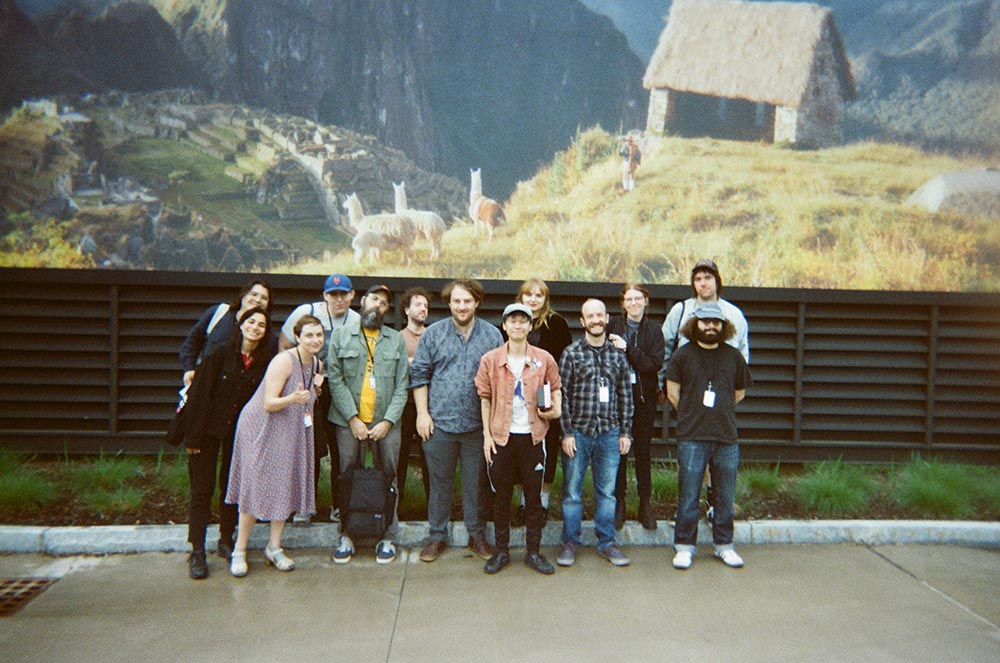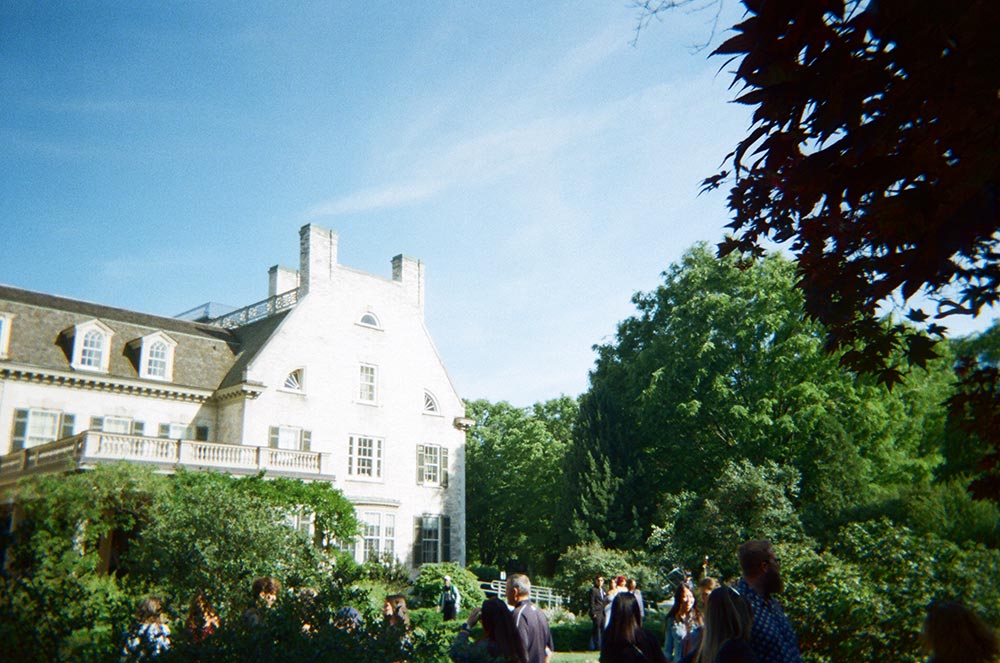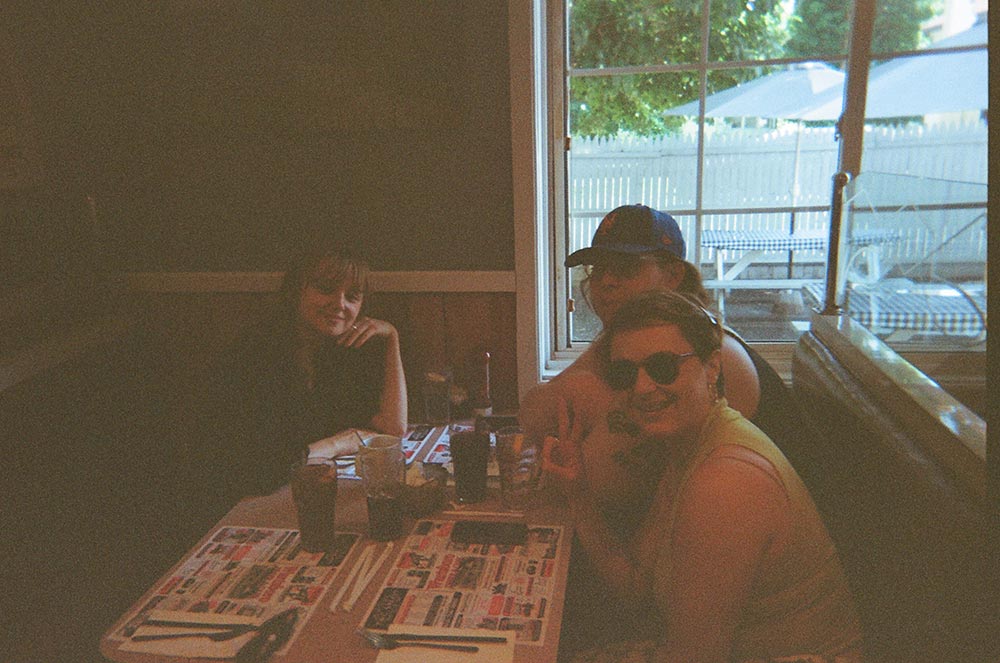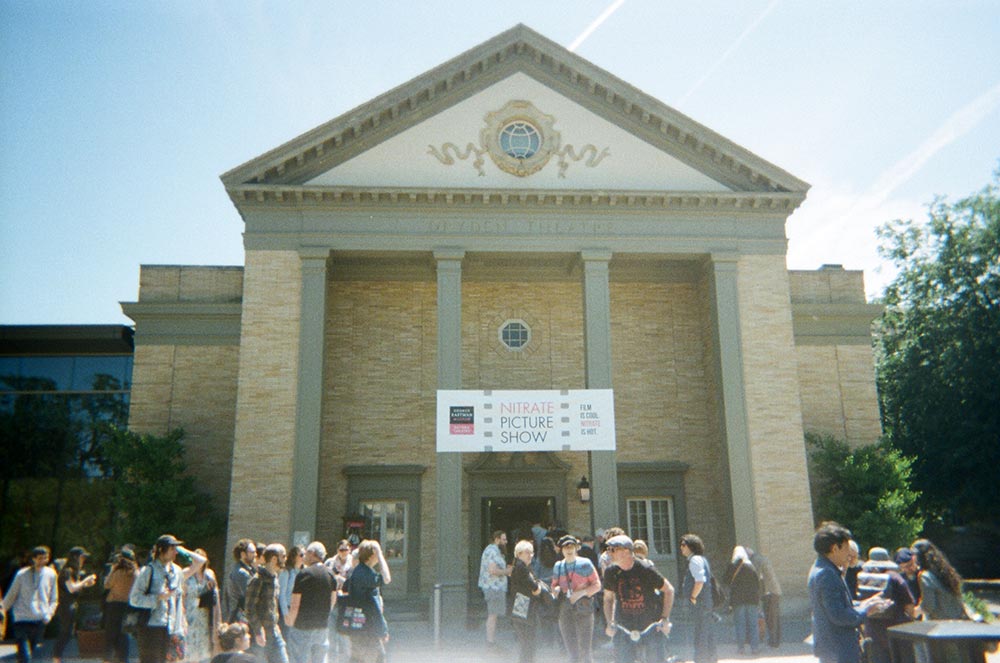I can still feel the sting from last year’s Nitrate Picture Show line-up announcement. Unable to attend the 2023 iteration, I tried to head off my FOMO at the pass, purposefully ignoring any hint of information. Still, the good news seeped in, and not 30 minutes after the George Eastman Museum’s eagerly-awaited email, I was frantically texting with fellow veteran attendees about a possible last-minute marathon drive to Rochester. Our collective fever ebbed, our nascent plans fizzled, and I stayed put in Brooklyn. Frustration roiled inside me—a cocktail of bitterness, jealousy, and grief. From that day forth, I vowed never to miss another (moviemaking notwithstanding).
That’s the gamble, and part of the fun: buying in blind, spending months in feverish anticipation for the day-of drop, until that blessed moment when the veil is lifted and the offerings blossom in full. What sets the Nitrate Picture Show apart from garden-variety mystery marathons is its most alluring prospect: every film in the schedule is a nitrate print. There are only a handful of cinemas in North America with the necessary equipment and labor to show these materials, and the George Eastman Museum is among the most prolific and reverent. Nitrate film stock fell out of use in 1950, or thereabouts, and the difference between these and “safety film” prints is unmistakable. More than the age of the films, it is the objects themselves which offer an express ticket down the rabbit hole of yesteryear.
When the Museum sent their first, tantalizing press release last December, I felt again that old familiar urge to wander north and west to Flower City. This would mark my fourth sojourn, and with several Rochester weekends under my belt, it wasn’t long before I felt a familiar rhythm take hold. I’d expected to quickly fall back into the habits of Nitrates past: a garbage plate at Dogtown, dancing at Lux Lounge, a boozy afternoon at the Greek Festival next to the Museum. But this go around I’d hitched my wagon to a merry band of first-timers—fellow colleagues from Spectacle Theater and Screen Slate—and through whose wide-eyes, I found a newfound appreciation. Together, we comprised a small group within an annually-increasing wave of visitors from New York City, making the seven-hour trek for a cinematic weekend that is part pilgrimage, part endurance test, part exorcism.

On Thursday afternoon, still logy from the drive, our troupe beelined for the Dryden Theater with just enough time to catch the opening night film: D. W. Griffith’s epic Intolerance (1916) on a print of notable provenance. Struck at Iris Barry’s behest for a 1930s exhibit of silent cinema at the Museum of Modern Art, the materials made their way to Nazi Germany shortly thereafter, remaining behind the Iron Curtain until German reunification in the early 1990s. A lengthy, contemporaneous prologue, written by Barry, preceded the film. I’m paraphrasing here, but in essence: despite its popularity, Griffith’s Confederacy-apologia The Birth of Nation (1914) received its fair share of critique upon release. His 1916 follow-up was an attempt to over-correct, portraying the social ills of drunkenness, war, religious persecution, and labor suppression as symptoms of intolerance itself.
Whether from fatigue, awe, or an extra dose of edibles (my “movie medicine”), our crew deemed Griffith’s indulgent sprawl as nothing short of a masterpiece. Kibitzing in the parking lot some four hours later, someone joked that the “W’ in “D.W.” stood for “woke”—so moved were they by the film’s curveball final act message of prison abolition. “When cannon and prison bars wrought in the fires of intolerance,” read the penultimate title card, “And perfect love shall bring peace forevermore. Instead of prison walls—Bloom flowery fields.”
Cross-cutting from the proto-Prohibition present, Ancient Babylon, the ministry of Jesus Christ, and the St. Bartholomew’s Day Massacre of 1572, Griffith’s Intolerance set a welcome tone of temporal chaos. All weekend long, nostalgia’s bittersweet aroma floated in and out of the Dryden Theater, with hindsight and retrospect providing a thematic throughline from screening to screening. At least a handful of films were set in a romantic fable of the 19th century, combining a patronizing appreciation for hoop skirts and horse-drawn carriages with timely social critique. G. W. Pabst’s adaptation of the Bertolt Brecht-Kurt Weill musical The Threepenny Opera (1931) reinterpreted Victorian London as an Expressionist playground of shadow and chicanery. Raoul Walsh’s James Cagney vehicle, The Strawberry Blonde (1941), was produced a mere half-century after its setting, reframing the period romance as a screwball satire of American ambition and women’s liberation. And lest we forget the weekend’s most anticipated screening: Vincente Minneli’s Meet Me in St. Louis (1944), which followed a year in the life of a turn-of-the-century American family as they wrestle with the unceasing drumbeat of so-called “progress.”

The Nitrate Picture Show and its attendees have always taken a sporting attitude toward social media, but this year’s most notable shift was the unavoidable Letterboxd chatter following every screening. While I myself do not indulge, I can’t fault friends and colleagues for gravitating toward a movie list-making tool that offers the prospect of camaraderie in exchange for your viewership data. No surprise, then, that our final day saw a minor scandal unfold in real time. Following the Sunday matinee screening of St. Louis, friend and fellow filmmaker Drew Tobia alerted me to an especially spicy take. “I muddled through somehow…” wrote some friendless little shit who wouldn’t know talent if it bit him on the ass. “No thanks to Judy Garland, the embodiment of cloying Americana. If they cast anybody else it would have been a much more enjoyable experience.” This shot-in-the-back— and on day one of Pride Month, no less—caused understandable shock and ire among our cadre of cinephiles, queers, and queer cinephiles. I suppose there’s no accounting for taste.
Driving homeward with fellow Spectacle Theater volunteers Dan Scanlon, Marisa Shepard, and Elizabeth Purchell, I congratulated my colleagues on their first successful trip to Nitrate. As a frequent flier, I was eager to revisit some of that new-ness through their own sense of discovery. Some days later, with our spellbinding trip in the rearview, I asked them for their impressions. “I truly didn't know what to expect,” Shepard replied. “I suppose, subconsciously, I thought it might have been more of an academic experience, not nearly so colorful and friendly. It's not that it wasn't educational—I even remarked that it felt like school (in a good way)—but the curation and format seemed motivated by enthusiasm and curiosity rather than pretension or any assumption of prior knowledge.”

The technical aspect was a potent draw for Spectacle member Paul Crucero, whose frequent work running 16mm screenings in Brooklyn’s beloved microcinema gives him a personal appreciation for the George Eastman Museum’s projection team. “I feel like the heights of projecting, from a technical standpoint, are nitrate shows,” he said. “As a film projectionist, it's struck me for a few years now that this is a festival one in the field needs to make a pilgrimage to at least once.” With an audience composed not only of moviegoers, but cinema workers from New York and beyond, projectionists never lacked for applause, their names acknowledged at every screening by the program’s archivists and curators.
Repertory cinema is a sticky thing, always evading hard-and-fast delineation (When does a film enter the “repertoire”? Ten years? Twenty?). The innately time-bending practice of repertory moviegoing—a lobe in the past, a lobe in the present—becomes a transcendent experience, offering audiences a glimpse into cinema history typically reserved for archivists, preservationists, and their ilk. To attend a repertory screening is itself a kind time-travel, scattering the viewer’s consciousness across these realms. A shrewd moviegoer understands, consciously or not, how to watch the repertoire: with half a mind in tempus res, as though the film were new to the world itself, and half a mind in the here-and-now. With each passing year, the Nitrate Picture Show shepherds an ever-growing audience through the portal, bringing forth popular favorites and deeper cuts from the world’s cinematic cryo chambers. Some things never change—the long lines for entry, the even longer Dryden Theater curtain rise—but for a too-fleeting weekend in Rochester, everything old is new again.
Photos courtesy of Dan Scanlon



